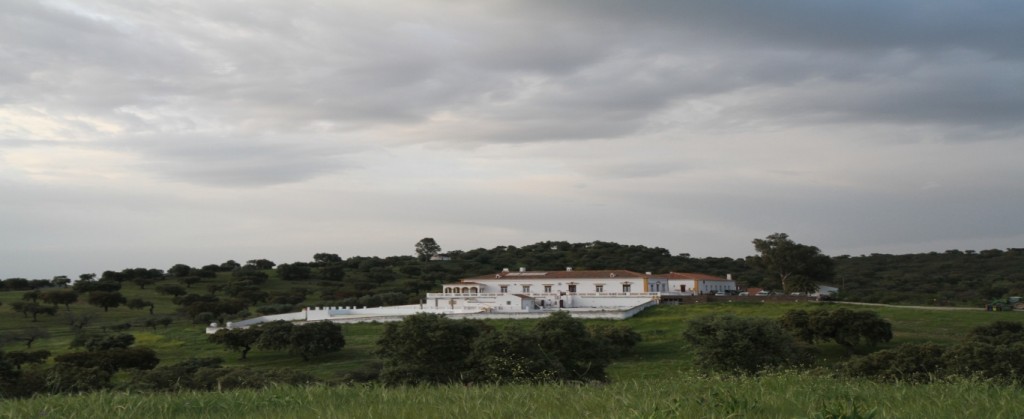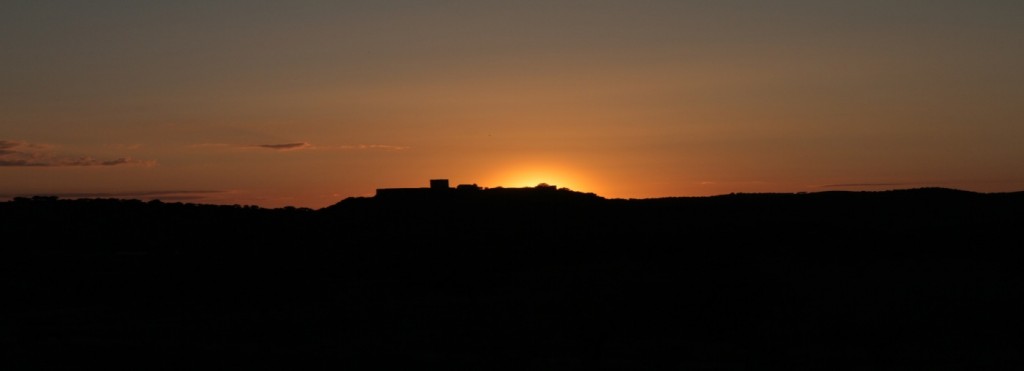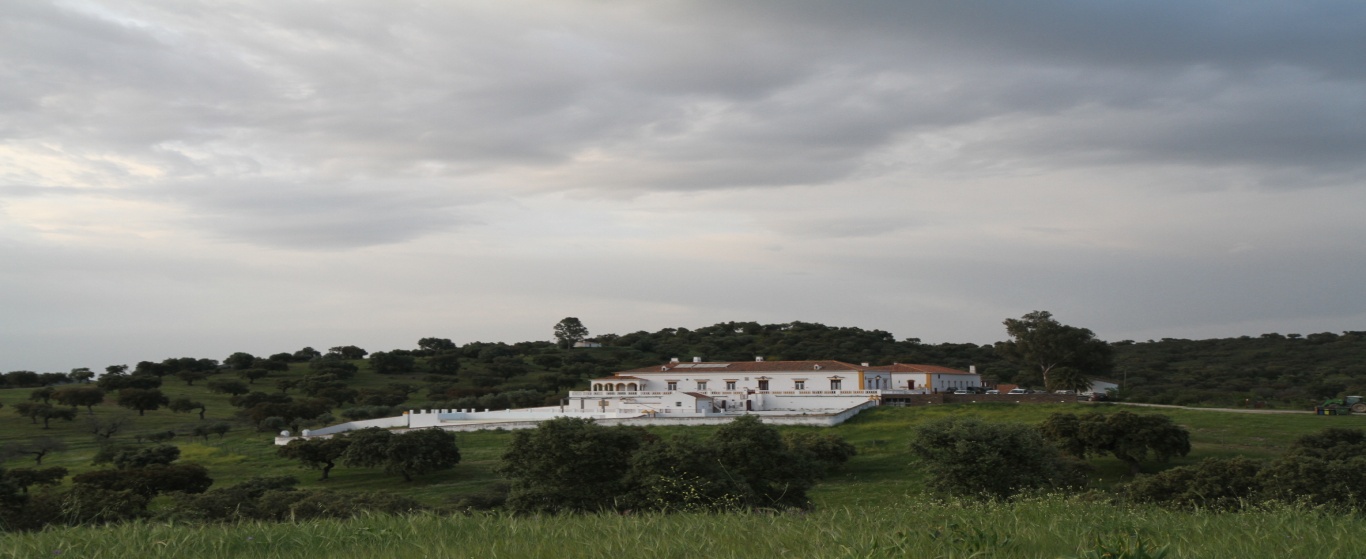
Herdade da Coitadinha, which used to be a state, was acquired by EDIA in order “to promote the rural development through the practical demonstration of an agricultural, touristic and environmental conservation project”.
Situated around 8km from the village of Barrancos, inside “Natura 2000” territory, in a 1000 hectares property, bounded by Ardila River and Murtega Creek, Noudar Nature Park is a project that was realized, because of the funds provided as a mitigation measure for impacts caused by the construction of Alqueva Dam.
Set up after EDIA’s purchase of Herdade da Coitadinha in 1997, the purpose of the project was to compensate the natural cycle for the loss of habitats and ecosystems in the area where Alqueva was constructed, as well as to prove that natural preservation is possible while maintaining a high rate of agricultural activity. About 70 percent of open field has led to the richness in the diversity of flora and fauna of species such as the holm oak stands and the Red Kite of the Griffon Vultures that inspired ‘Parque de Natureza de Noudar’ (PNN)’s inclusion in the Natura 2000 Network, which is a centerpiece of European Union nature and biodiversity policy. The mission comprised the restoration of farming to Herdade da Coitadinha while preserving the tradition and cultural practices typical for the area and simultaneously being highly innovative in what concerns sustainable development.
The conservation of biodiversity involves a complex and sophisticated process with steps such as continuous biodiversity monitoring, where a group of biologists thoroughly study and tabulate statistics of population per every species present within the borders of the Natural Park, this includes denoting the arrival or disappearance of a species. The data collected is then used to develop management measures for protection of natural resources in cooperation with the workers, who look over the domestic animals such as cows and pigs, informing them of areas with endangered organisms where the animals should not be allowed to graze. Furthermore, another potential project of interest is the aspiration to acquire a female and a male Lynx with the purpose of re-introducing the species to the area. On that account – manmade shelters for rabbit interbreeding were constructed. These rabbits are then transported to certain localities where they can be fed to the very rare and mesmerizingly exotic Lynx. The idea behind this project is to increase the population quantity of rabbits, hence providing a greater availability of food for the member of the cat family and consequently ensuring that they become a more frequently observed occurrence on the Portuguese lands. However, the organization shared they will “only pursue this ideal once they reached a larger amount of rabbits”, as the current is relatively low due to a constantly changing strain of infectious diseases.
Fortunately the programme does not only focus on the preservation of the ecosystem, but also on spreading the knowledge of how to do it with an enthusiastic attitude with the rest of the community on a Global scale. A large variety of activities such as pedestrian and cycled tours that may be guided or digital, thematic workshops, environmental education activities – both through visits from schools and holiday camps, as well as special regions of the park characteristically adapted for family activities that would allow the children to appreciate and enjoy nature. The high number of distinct birds, as well as the sparkling night sky with dazzling stars, which has been recognized as one of the ultimate places to observe stars, also attract a lot of visitors in Casa de Monte and Casa da Malta.
If you are not yet convinced about the sustainability of the Nature Park, do note that even the pool has been adapted to the most environmentally systems as it allows the re-use of water through rotating mechanism that continuously purifies it. Well, are you convinced now?

The municipality is planning to reconstruct Castelo De Noudar to its former glory with the aim of adding another tourist destination to the places of interest ,with the purpose to increase tourism and gain more funds for environmental projects
Grupo 1: Tomas De Backer, Angelina Dimitrova, Mafalda Gomes, Chrystala Kyriakou.




You must be logged in to post a comment.